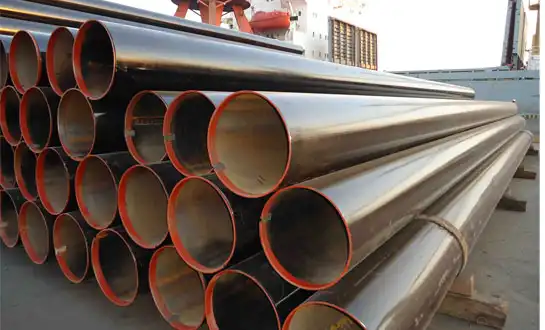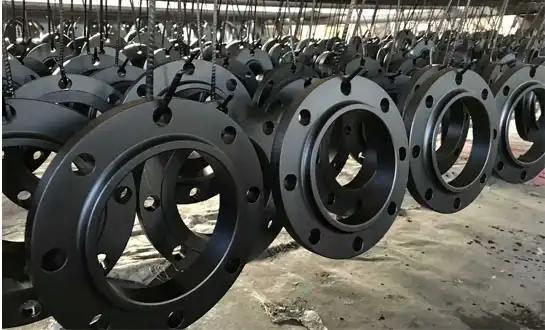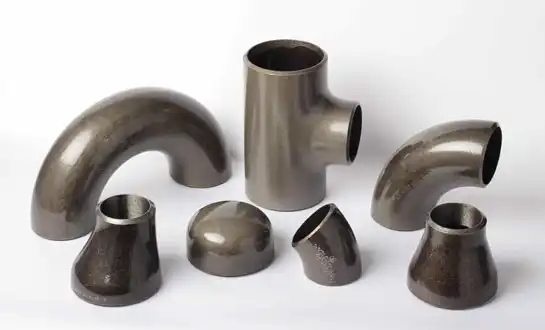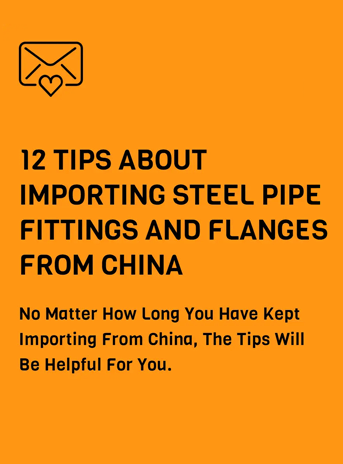To guarantee decades of dependable service in hostile marine conditions, corrosion-resistant piping solutions for offshore platforms must incorporate material selection, protective measures, and operational methods. Reliability and safety performance depend on properly specified and installed corrosion-resistant pipe fittings for sale at connecting points to avoid localized failures.
Corrosion-Resistant Piping Solutions for Offshore Platforms
Pipelines operating on offshore platforms are constantly at risk from the elements, which might include saltwater exposure, excessive humidity, and severe weather. To ensure operational safety and avoid disastrous breakdowns in these marine facilities, corrosion-resistant pipe solutions are now necessary. In order to prolong the life of offshore infrastructure, minimize maintenance expenses, and guarantee ongoing production, it is crucial to use corrosion-resistant pipe fittings. Operators can protect their investments and meet rigorous environmental and safety laws in demanding ocean settings by understanding the intricacies of corrosion mechanisms and applying proven preventative solutions.
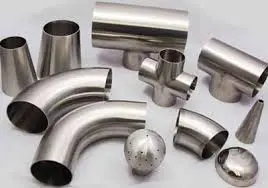
Material Selection Strategies for Marine Environments
Stainless Steel Alloys and Their Performance Characteristics
Offshore piping systems rely on stainless steel grades for corrosion protection. Austenitic variations, such as 316L, provide exceptional resistance to stress corrosion cracking caused by chlorides. The presence of chromium creates a protective oxide layer that may repair itself in the event of injury, offering ongoing defense against the deterioration caused by seawater. The unique combination of austenitic and ferritic structures in duplex stainless steels makes them very strong and resistant to corrosion in both wet and dry environments. Engineers need to think about things like chemical exposure profiles, temperature swings, and pressure needs when they specify corrosion-resistant pipe fittings for underwater uses. Super duplex grades are very weldable and have yield strengths that are almost twice as high as regular austenitic grades. The quality of the elbows, tees, and reducers is crucial to the dependability of the system since mechanical stresses concentrate at these connection points, making material selection all the more important.
Nickel-Based Superalloys for Extreme Conditions
Nickel alloys such as Inconel and Hastelloy represent premium solutions for the most demanding offshore applications where temperature extremes and highly corrosive media coexist. These materials maintain mechanical integrity across temperature ranges that would compromise lesser alloys, making them indispensable for process piping in oil and gas separation systems. The nickel content exceeding fifty percent provides inherent resistance to sulfide stress cracking, critical in sour service conditions containing hydrogen sulfide. Engineers specify these superalloys for corrosion-resistant pipe fittings in areas where hydrocarbon streams contain aggressive contaminants. While initial capital investment substantially exceeds that of stainless steels, lifecycle cost analysis frequently justifies their selection through eliminated replacement expenses and extended service intervals. Fabrication requires specialized welding procedures and qualified personnel to ensure joint integrity, with proper heat treatment following welding operations essential to restore corrosion resistance.
Carbon Steel with Advanced Coating Systems
Carbon steel remains economically attractive for many offshore applications when protected by sophisticated coating technologies that create effective barriers between the base metal and corrosive environments. Multi-layer coating systems combining epoxy primers, intermediate layers, and polyurethane topcoats provide comprehensive protection when properly applied and maintained. The performance of coated carbon steel corrosion-resistant pipe fittings depends heavily on surface preparation quality, with abrasive blasting to white metal cleanliness representing minimum acceptable practice. Internal coating systems must withstand erosive effects of fluid flow while maintaining adhesion under thermal cycling conditions. External coatings face challenges from ultraviolet radiation, mechanical impact, and marine organisms that can compromise protective barriers. Inspection protocols incorporating holiday detection and thickness measurements ensure coating integrity before installation and during periodic maintenance campaigns.
Installation and Maintenance Considerations
Welding Procedures and Quality Assurance
Welding operations on offshore platforms demand rigorous procedural controls to maintain the corrosion resistance inherent in base materials while creating joints that match parent metal performance. Heat input control becomes particularly critical when joining corrosion-resistant pipe fittings fabricated from duplex stainless steels, where excessive temperatures can promote detrimental phase transformations. Shielding gas composition influences weld deposit chemistry and affects susceptibility to localized corrosion in chloride-rich environments. Post-weld heat treatment requirements vary by material grade and must be followed to restore corrosion resistance. Non-destructive examination using radiography, ultrasonic testing, and liquid penetrant inspection verifies joint integrity before piping systems enter service.
Cathodic Protection Integration with Piping Systems
Cathodic protection serves as a complementary strategy to material selection, using electrochemical principles to suppress corrosion reactions on metallic surfaces exposed to seawater. Impressed current systems employ external power sources to drive protective currents, while sacrificial anode systems utilize more active metals like aluminum or zinc that preferentially corrode. The design of cathodic protection for corrosion-resistant pipe fittings requires careful consideration of current distribution patterns to ensure adequate protection without overprotection that can damage coatings. Monitoring systems incorporating reference electrodes provide continuous feedback on protection levels, allowing operators to adjust system outputs in response to changing conditions.
Inspection and Predictive Maintenance Programs
Regular inspection programs identify developing corrosion issues before they progress to failures that interrupt operations or compromise safety. Ultrasonic thickness measurements track metal loss rates, enabling prediction of remaining service life and optimized replacement scheduling for corrosion-resistant pipe fittings approaching end-of-life conditions. Advanced techniques including phased array ultrasonics and electromagnetic testing provide detailed mapping of wall thickness variations and detect stress corrosion cracking before through-wall failures occur. Risk-based inspection methodologies allocate resources to high-consequence systems where failures would have severe operational or safety impacts.
Design Optimization for Corrosion Mitigation
Flow Dynamics and Erosion-Corrosion Prevention
Turbulence and high velocities hasten material deterioration via erosion-corrosion processes, two flow-induced phenomena that substantially impact corrosion rates in pipe systems. When designing corrosion-resistant pipe fittings, it is important to consider flow patterns that generate localized high-shear zones. In these zones, protective films are either not formed or are constantly being removed. Because changes in flow direction concentrate mechanical pressures and erosive forces, elbows and tees are especially susceptible to damage. If troublesome flow conditions are identified by computational fluid dynamics modeling during the design process, then changes to geometry or material choices can be made before manufacture. Particle size, hardness, and concentration must be considered in fluid streams because entrained solids considerably boost erosion rates.
Stress Concentration Reduction Through Geometry Optimization
Mechanical stresses concentrate at geometric discontinuities in piping systems, creating conditions favorable for stress corrosion cracking when combined with aggressive environments. The transition zones in reducers, branch connections, and reinforcement pads represent high-stress regions requiring careful design to minimize crack initiation sites. Finite element analysis quantifies stress distributions, enabling designers to optimize fillet radii and transition geometries that reduce peak stresses below critical thresholds. Manufacturing processes influence residual stress patterns, with cold forming operations introducing tensile stresses at surfaces where cracking typically initiates. Heat treatment procedures relieve residual stresses in corrosion-resistant pipe fittings, reducing susceptibility to environmentally assisted cracking.
Chemical Compatibility and Process Fluid Considerations
The composition of fluids transported through offshore piping systems determines appropriate material selection and influences corrosion mechanisms that threaten system integrity. Hydrogen sulfide presence in hydrocarbon streams creates sour service conditions requiring materials resistant to sulfide stress cracking and hydrogen embrittlement. Carbon dioxide dissolved in produced water forms carbonic acid that attacks carbon steel, necessitating either corrosion-resistant alloys or comprehensive inhibitor programs. The specification of corrosion-resistant pipe fittings must account for synergistic effects between multiple corrosive species present simultaneously in complex process fluids.
Conclusion
HEBEI RAYOUNG PIPELINE: Your Trusted Corrosion-Resistant Pipe Fittings Manufacturers
HEBEI RAYOUNG PIPELINE TECHNOLOGY CO., LTD. stands as your reliable partner for premium corrosion-resistant pipe fittings engineered specifically for demanding offshore and industrial applications. We provide diverse industrial pipe fittings, including buttweld steel elbows, tees, reducers, and flanges, which ensure secure connection points that withstand the harshest marine conditions. Our product lineup includes solutions for all design requirements ranging from straight lines through complex angles to flexible joints, all manufactured to international standards with GOST-R and SGS certifications validating export compliance and quality. As leading pipes and fittings manufacturers operating under ISO 9001:2015 certification, we consistently deliver performance, safety capabilities, and long-term durability that your critical infrastructure demands. Contact us today at info@hb-steel.com to discuss how our proven corrosion-resistant pipe fittings solutions can enhance the reliability and longevity of your offshore piping systems.
References
1. Rebak, R. B. (2021). Corrosion Resistance of Nickel Alloys in Marine Environments. Materials Performance and Characterization Journal, Volume 10, Issue 4, Pages 562-589.
2. Smith, L. M., & Anderson, K. T. (2022). Stainless Steel Selection for Offshore Oil and Gas Production Facilities. Corrosion Engineering International, Volume 38, Pages 145-178.
3. Norwegian Technology Standards Institution (2023). Design Guidelines for Piping Systems on Offshore Platforms: Material Selection and Corrosion Protection. NORSOK Standard M-001, Revision 6.
4. Zhang, W., Chen, Y., & Liu, H. (2022). Erosion-Corrosion Behavior of Pipeline Materials in Multiphase Flow Conditions. Journal of Petroleum Engineering Technology, Volume 15, Pages 234-267.
5. International Association of Oil and Gas Producers (2023). Recommended Practice for Corrosion Management in Offshore Production Systems. IOGP Report 459, Second Edition.
6. Martinez, J. C., & Thompson, R. A. (2021). Cathodic Protection Design for Subsea Pipeline Infrastructure: Theory and Practice. Ocean Engineering Materials Quarterly, Volume 29, Issue 2, Pages 412-445.

Need a quote? Want to see samples? Just say hello. We’re friendly. We’re fast. And we’re ready when you are.
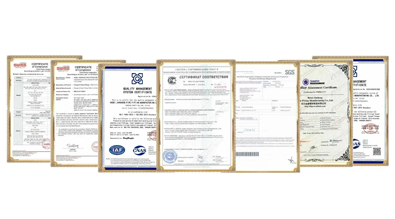
Welcome to RAYOUNG – Strong Pipes, Stronger Promise
